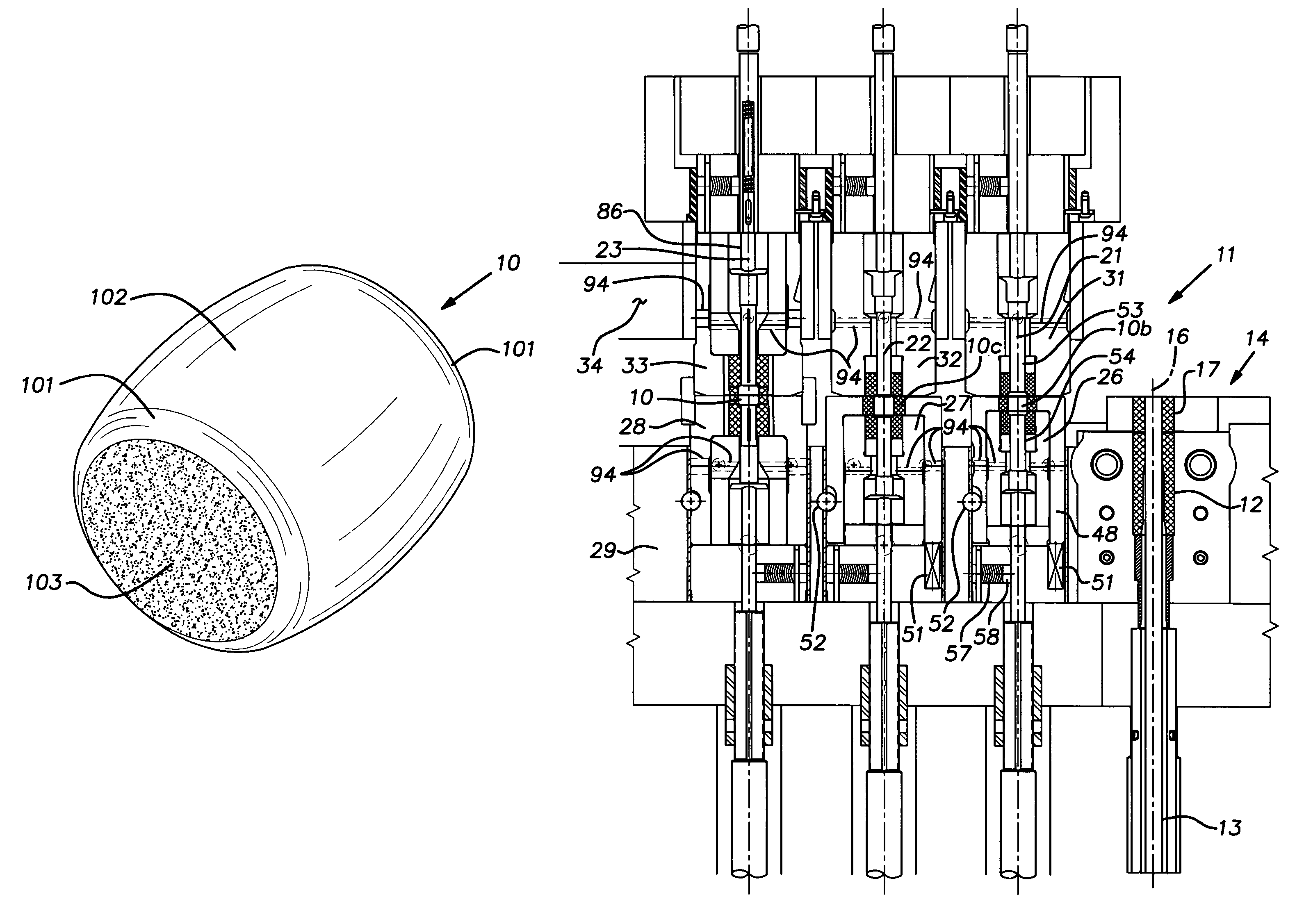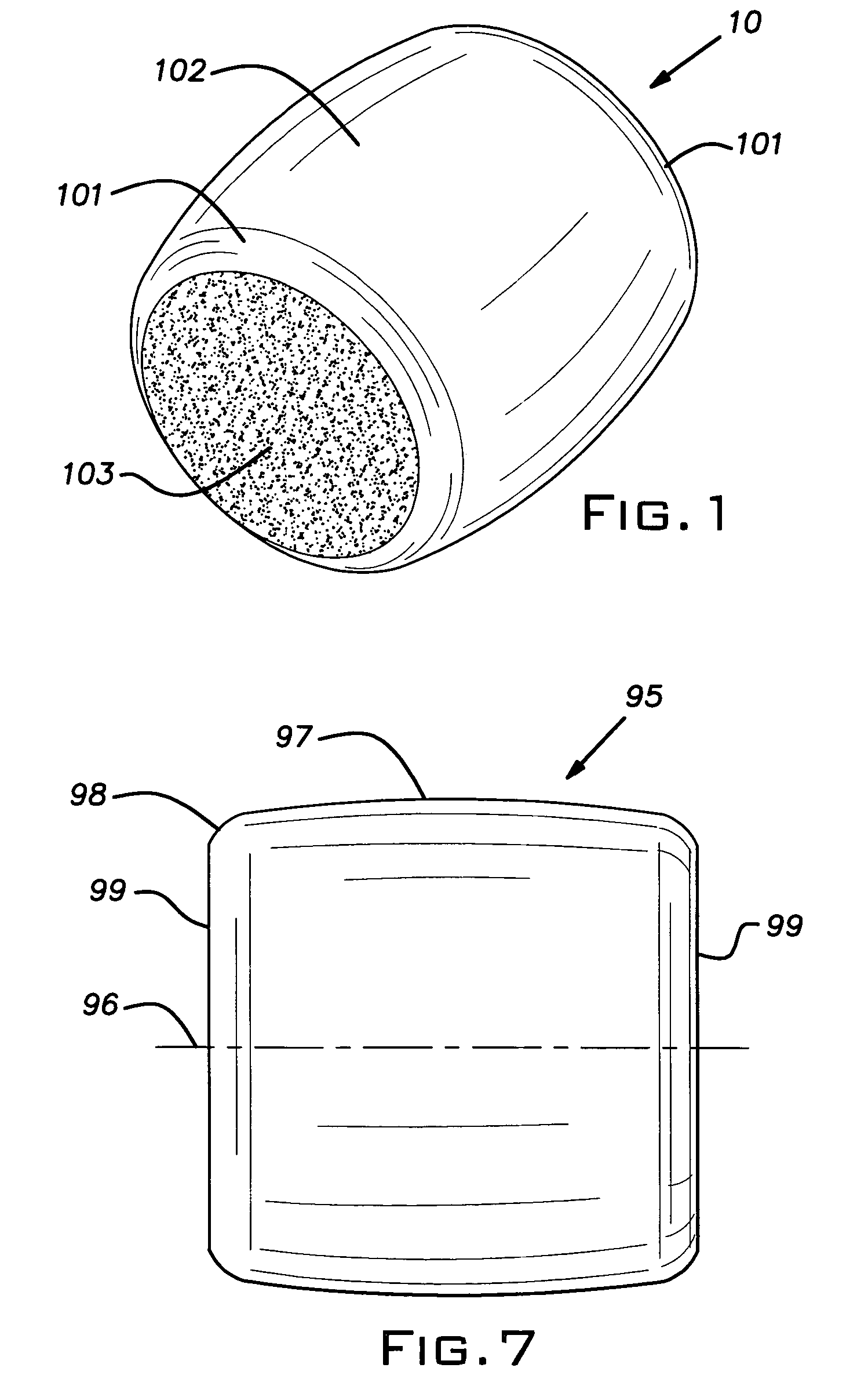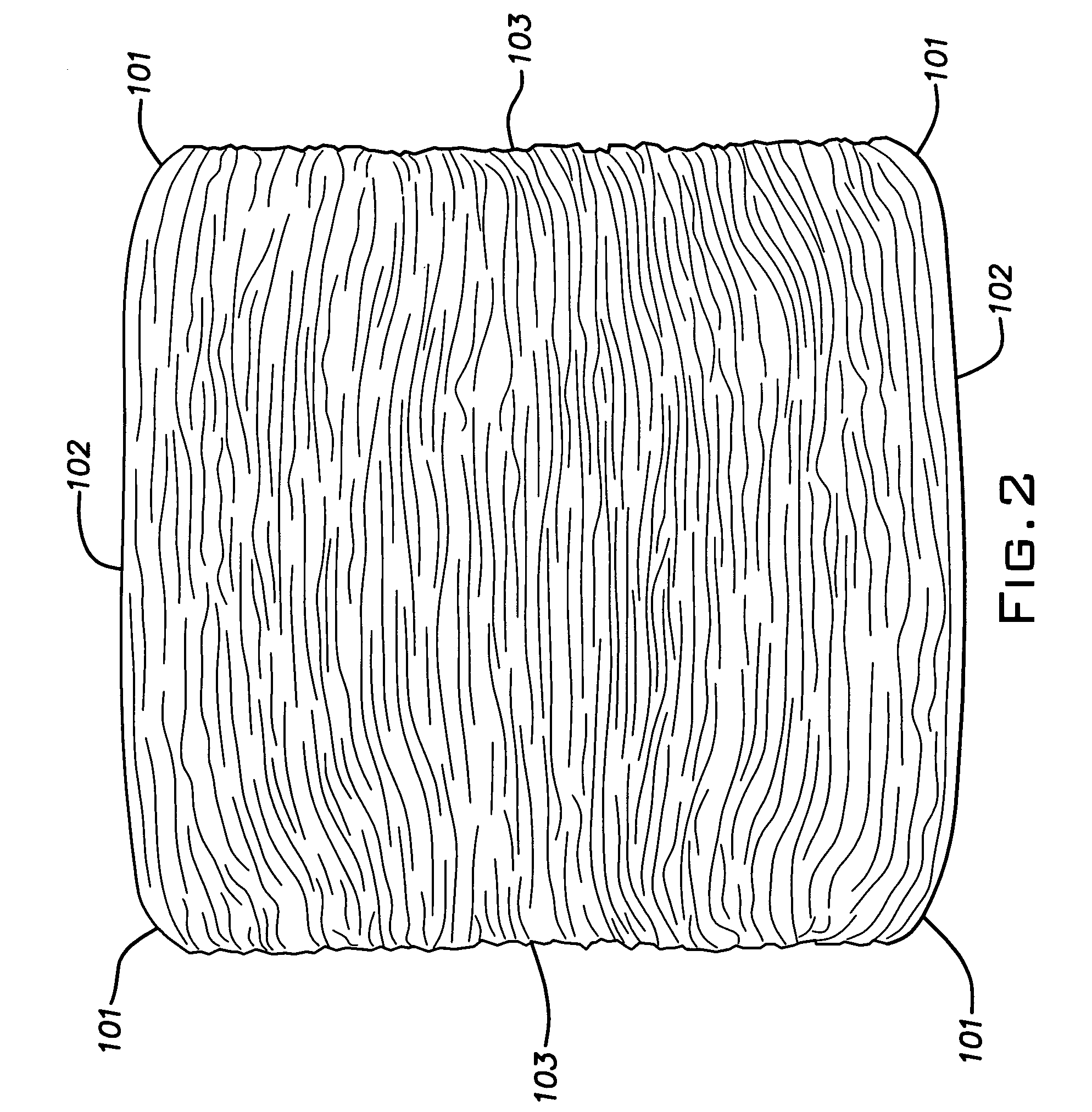Method of cold-forming near net shape metal roller blanks for anti-friction bearings
a technology of anti-friction bearings and metal roller blanks, which is applied in the field of cold-forming roller manufacturing, can solve the problems of increasing the cost of finished rollers, affecting the quality of finished rollers, so as to reduce machining or grinding costs, avoid premature bearing failure, and improve grain structure
- Summary
- Abstract
- Description
- Claims
- Application Information
AI Technical Summary
Benefits of technology
Problems solved by technology
Method used
Image
Examples
Embodiment Construction
[0014]FIG. 1 illustrates an example of a cold-formed roller blank 10 made in accordance with the present invention. The roller blank is of the barrel type, but it will be appreciated that certain principles of the invention are applicable to other roller styles including cylindrical and tapered rollers. The roller blank 10 made by the processes and tools disclosed hereinbelow can be produced to dimensional tolerances that are reduced to about 1 / 10 of that which is presently commercially accepted for subsequent finishing, typically by grinding after heat treatment. The roller blank 10 after heat treating and grinding is typically used with multiple identical pieces in anti-friction bearing assemblies as known in the art.
[0015]The roller 10 is formed in a multistation progressive cold-forming machine 11 illustrated in FIG. 3 and of a type generally known in the industry. The forging machine 11 is depicted in a plan view of the tooling area in FIG. 3. The machine 11 includes a quill 12...
PUM
| Property | Measurement | Unit |
|---|---|---|
| temperature | aaaaa | aaaaa |
| radius | aaaaa | aaaaa |
| length | aaaaa | aaaaa |
Abstract
Description
Claims
Application Information
 Login to View More
Login to View More - R&D
- Intellectual Property
- Life Sciences
- Materials
- Tech Scout
- Unparalleled Data Quality
- Higher Quality Content
- 60% Fewer Hallucinations
Browse by: Latest US Patents, China's latest patents, Technical Efficacy Thesaurus, Application Domain, Technology Topic, Popular Technical Reports.
© 2025 PatSnap. All rights reserved.Legal|Privacy policy|Modern Slavery Act Transparency Statement|Sitemap|About US| Contact US: help@patsnap.com



